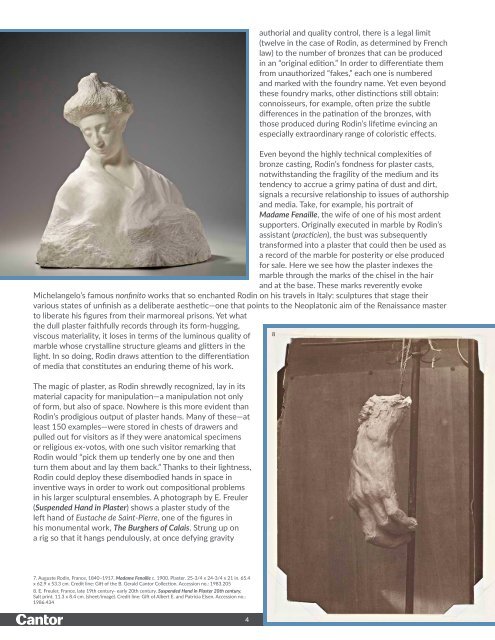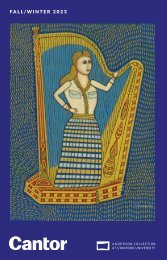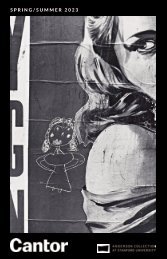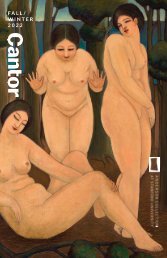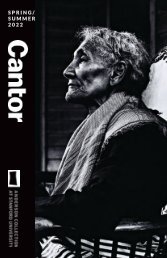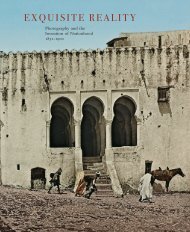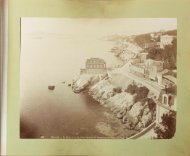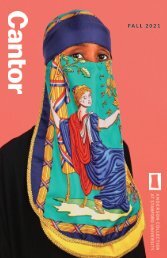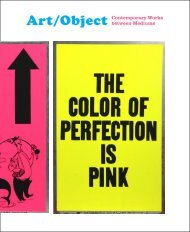Learning Guide | Recasting Rodin
It would hardly be an exaggeration to say that Auguste Rodin (1840–1917) forever changed the history of sculpture. Rarely had the medium so audaciously challenged the primacy of painting over the course of the nineteenth century. Long regarded as a “dead” medium of motionless, inert material, sculpture in Rodin’s nimble hands comes alive, breaking free of the plinths that traditionally separated sculpted figures in stone or metal from their earthbound beholders in flesh and blood. Patrick R. Crowley, PhD Associate Curator, European Art Cantor Arts Center
It would hardly be an exaggeration to say that Auguste Rodin (1840–1917) forever changed the history of sculpture. Rarely had the medium so audaciously challenged the primacy of painting over the course of the nineteenth century. Long regarded as a “dead” medium of motionless, inert material, sculpture in Rodin’s nimble hands comes alive, breaking free of the plinths that traditionally separated sculpted figures in stone or metal from their earthbound beholders in flesh and blood.
Patrick R. Crowley, PhD
Associate Curator, European Art
Cantor Arts Center
Create successful ePaper yourself
Turn your PDF publications into a flip-book with our unique Google optimized e-Paper software.
7<br />
authorial and quality control, there is a legal limit<br />
(twelve in the case of <strong>Rodin</strong>, as determined by French<br />
law) to the number of bronzes that can be produced<br />
in an “original edition.” In order to differentiate them<br />
from unauthorized “fakes,” each one is numbered<br />
and marked with the foundry name. Yet even beyond<br />
these foundry marks, other distinctions still obtain:<br />
connoisseurs, for example, often prize the subtle<br />
differences in the patination of the bronzes, with<br />
those produced during <strong>Rodin</strong>’s lifetime evincing an<br />
especially extraordinary range of coloristic effects.<br />
Even beyond the highly technical complexities of<br />
bronze casting, <strong>Rodin</strong>’s fondness for plaster casts,<br />
notwithstanding the fragility of the medium and its<br />
tendency to accrue a grimy patina of dust and dirt,<br />
signals a recursive relationship to issues of authorship<br />
and media. Take, for example, his portrait of<br />
Madame Fenaille, the wife of one of his most ardent<br />
supporters. Originally executed in marble by <strong>Rodin</strong>’s<br />
assistant (practicien), the bust was subsequently<br />
transformed into a plaster that could then be used as<br />
a record of the marble for posterity or else produced<br />
for sale. Here we see how the plaster indexes the<br />
marble through the marks of the chisel in the hair<br />
and at the base. These marks reverently evoke<br />
Michelangelo’s famous nonfinito works that so enchanted <strong>Rodin</strong> on his travels in Italy: sculptures that stage their<br />
various states of unfinish as a deliberate aesthetic—one that points to the Neoplatonic aim of the Renaissance master<br />
to liberate his figures from their marmoreal prisons. Yet what<br />
the dull plaster faithfully records through its form-hugging,<br />
viscous materiality, it loses in terms of the luminous quality of<br />
8<br />
marble whose crystalline structure gleams and glitters in the<br />
light. In so doing, <strong>Rodin</strong> draws attention to the differentiation<br />
of media that constitutes an enduring theme of his work.<br />
The magic of plaster, as <strong>Rodin</strong> shrewdly recognized, lay in its<br />
material capacity for manipulation—a manipulation not only<br />
of form, but also of space. Nowhere is this more evident than<br />
<strong>Rodin</strong>’s prodigious output of plaster hands. Many of these—at<br />
least 150 examples—were stored in chests of drawers and<br />
pulled out for visitors as if they were anatomical specimens<br />
or religious ex-votos, with one such visitor remarking that<br />
<strong>Rodin</strong> would “pick them up tenderly one by one and then<br />
turn them about and lay them back.” Thanks to their lightness,<br />
<strong>Rodin</strong> could deploy these disembodied hands in space in<br />
inventive ways in order to work out compositional problems<br />
in his larger sculptural ensembles. A photograph by E. Freuler<br />
(Suspended Hand in Plaster) shows a plaster study of the<br />
left hand of Eustache de Saint-Pierre, one of the figures in<br />
his monumental work, The Burghers of Calais. Strung up on<br />
a rig so that it hangs pendulously, at once defying gravity<br />
7. Auguste <strong>Rodin</strong>, France, 1840–1917. Madame Fenaille c. 1900. Plaster. 25-3/4 x 24-3/4 x 21 in. 65.4<br />
x 62.9 x 53.3 cm. Credit line: Gift of the B. Gerald Cantor Collection. Accession no.: 1983.205<br />
8. E. Freuler, France, late 19th century- early 20th century. Suspended Hand in Plaster 20th century.<br />
Salt print. 11.3 x 8.4 cm. (sheet/image). Credit line: Gift of Albert E. and Patricia Elsen. Accession no.:<br />
1986.434<br />
4


